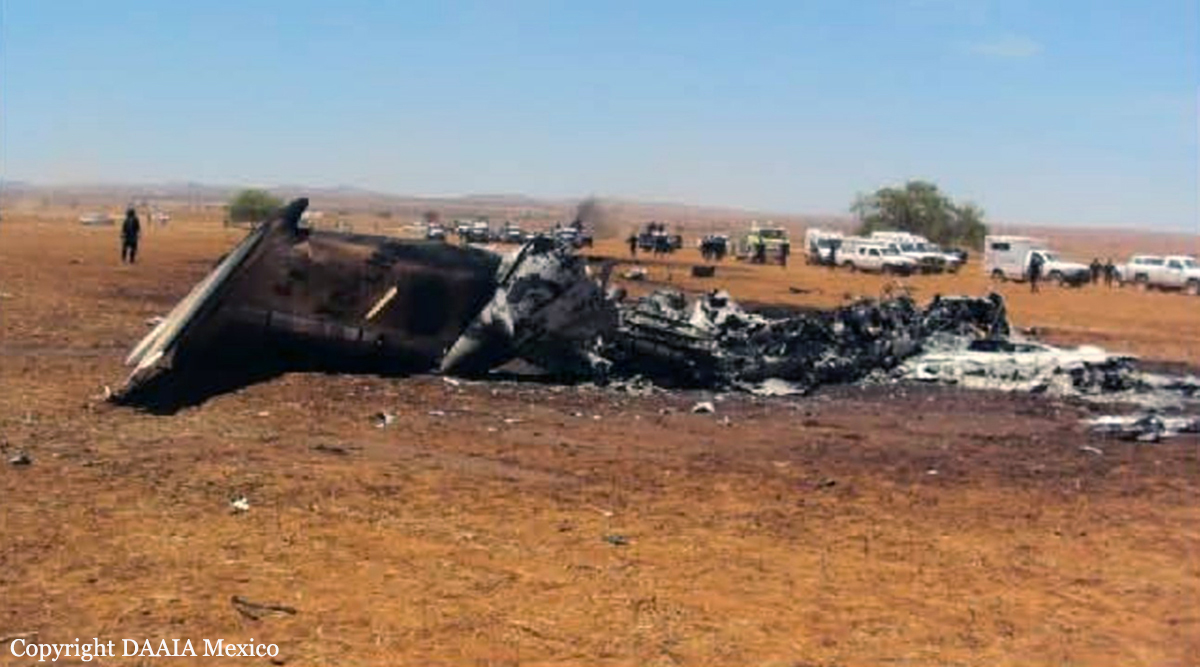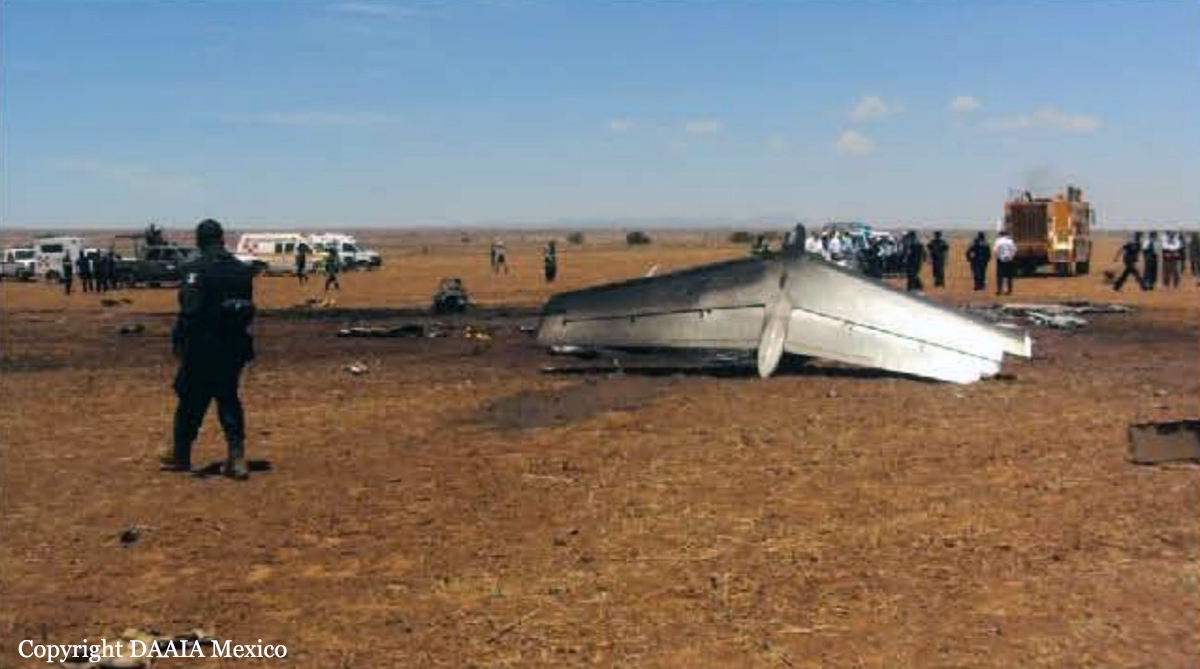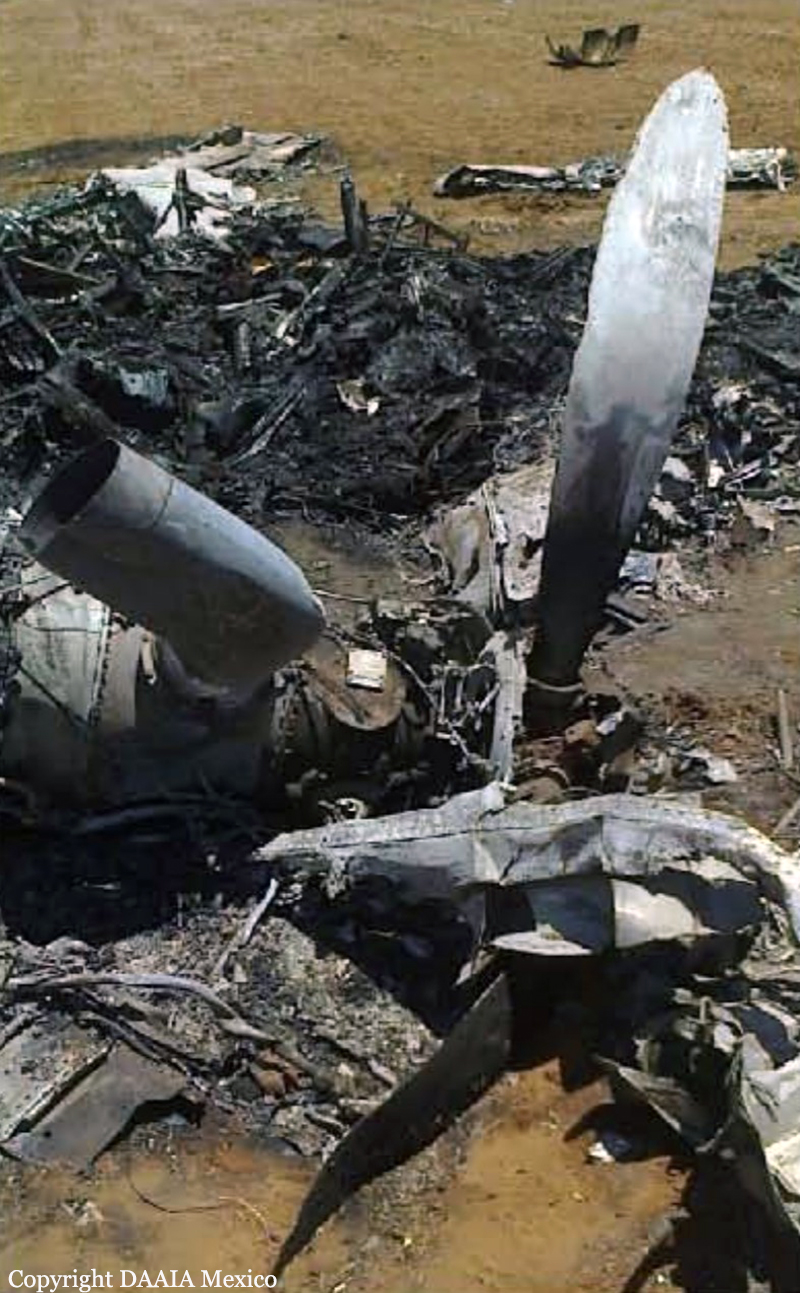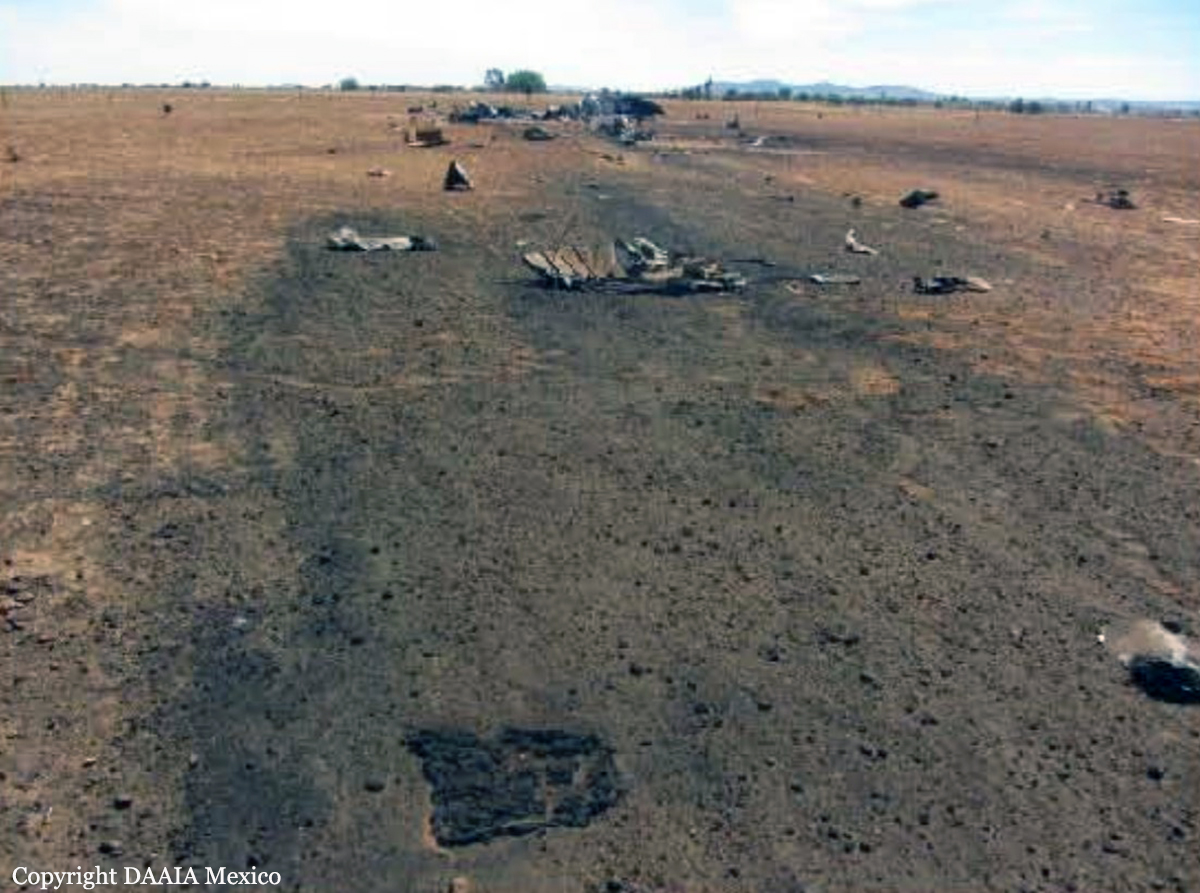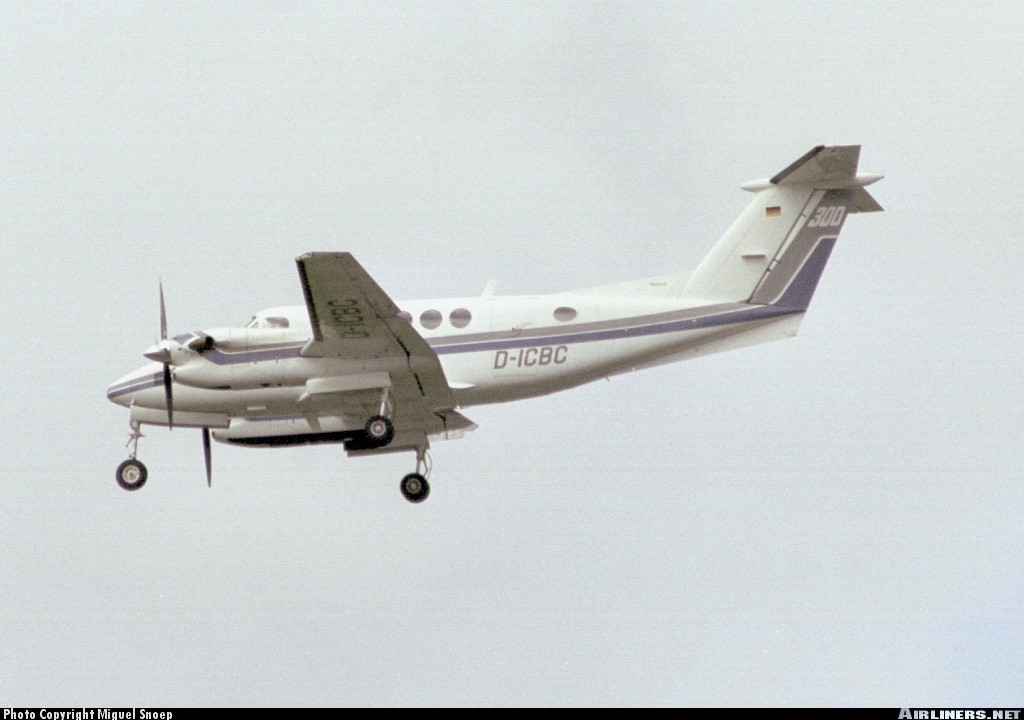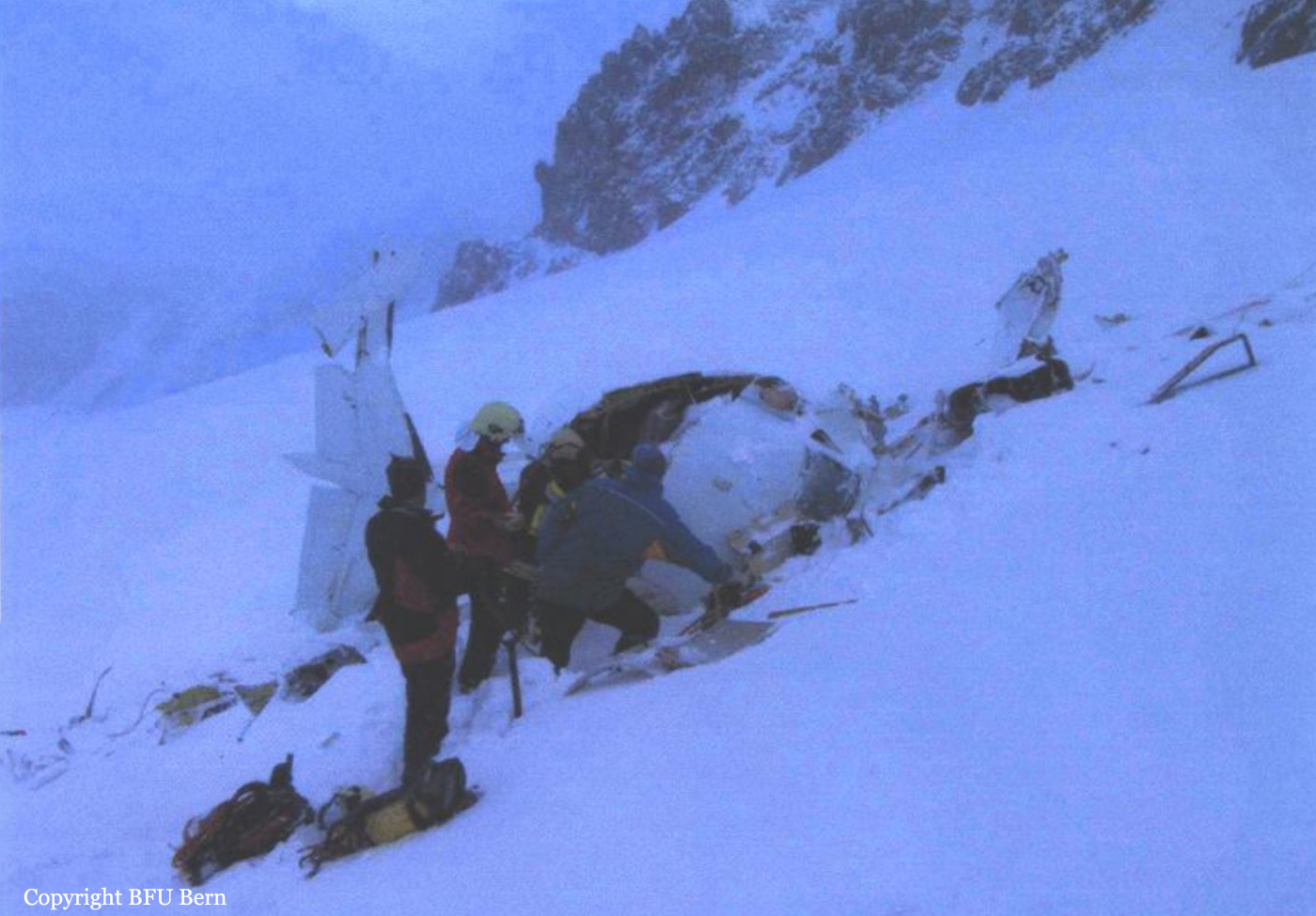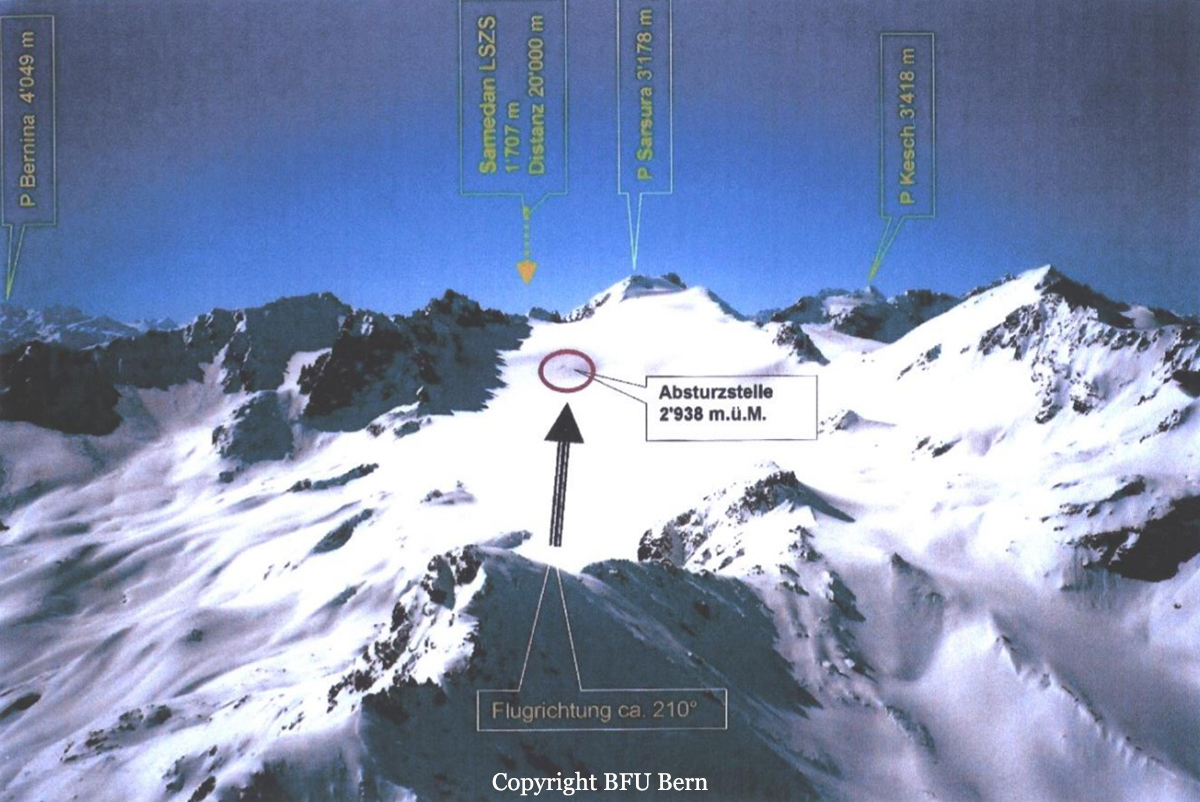Crash of a Beechcraft 300 Super King Air in Zacatecas: 6 killed
Date & Time:
Apr 30, 2013 at 1221 LT
Registration:
XC-LMV
Survivors:
No
Schedule:
Zacatecas - Mexico City
MSN:
FA-83
YOM:
1986
Crew on board:
2
Crew fatalities:
Pax on board:
4
Pax fatalities:
Other fatalities:
Total fatalities:
6
Aircraft flight hours:
7146
Aircraft flight cycles:
5756
Circumstances:
Shortly after takeoff from Zacatecas Airport Runway 20, while in initial climb, the crew informed ATC about technical problems with the left engine and attempted to return to land on runway 02. Eventually, the crew attempted an emergency landing when the aircraft crashed in a soft and dry terrain located southeast of the airport, bursting into flames, about one minute after takeoff. The aircraft was totally destroyed by a post crash fire and all six occupants were killed, among them two agents of the Federal Police and one employee of the Public Minister.
Probable cause:
Precautionary landing due to probable loss of left engine power, in soft and dry terrain, bogging down the legs of the main landing gear resulting in destruction of the aircraft. The following contributing factors were identified:
- Lack of application of CRM concepts,
- Lack of adherence to standard operating procedures.
- Lack of application of CRM concepts,
- Lack of adherence to standard operating procedures.
Final Report:
